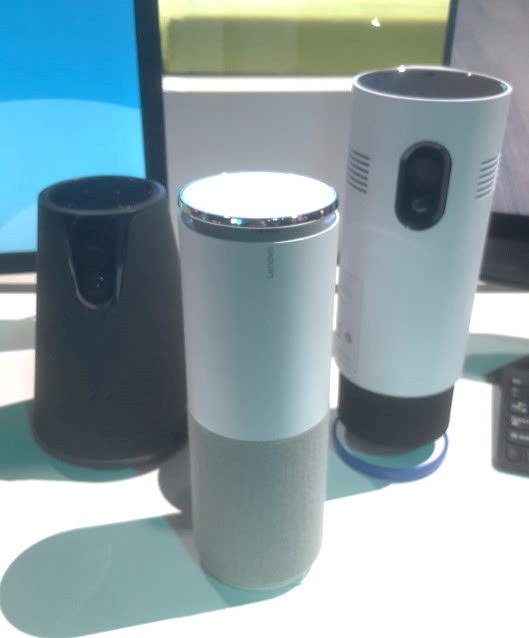I came to CES this year expecting to see countless drones buzzing overhead, based on last year’s fanfare. Upon arrival, I was surprised to see that some of the hype and overpromised technologies of last year were replaced by down-to-earth, pragmatic, useful technologies. Of course, drones were still there, as well as an increasing number of autonomous cars, and other advances in technologies that aren’t quite mature yet. But, my overall impression was that there are a few markets that have finally hit the mark, and are no longer waiting for the technology to “get there”. I saw products that have value and mass appeal for real-life use cases, here and now. Here’s a look at my impression of the top ones.
The Smart Home Is Here
When there were a handful of home control devices that couldn’t quite communicate with each other, one could say it was just a trend or a glimpse of the future. Now, with hundreds of mature products tackling many different use cases, it’s safe to say that the smart home is here, and here to stay.
Sound sensors, for example, have come a very long way and are now capable of identifying a baby crying, a dog barking or glass breaking and alert appropriately. There are many options to choose from for a smart doorbell, like Ring or Skybell, as well as smart smoke alarms, like Nest Protect or Birdi. Alternatively, you can just use the good old “dumb” ones, and train your sound sensor to respond when it hears the specific ring of your doorbell or smoke alarm and notify you accordingly. There are also smart thermostats, smart irrigation systems and water leak sensors, so almost every aspect of the home can be monitored and managed.
It’s worth noting that the number of these products using Bluetooth connectivity is rapidly increasing, taking the place of competing technologies like ZigBee, Z-Wave and Thread. While currently using BLE4.2, many product designers anticipate even better performance in future generations, thanks to the increased range and other enhancements of Bluetooth 5, released just at the end of 2016.
 Multiple connected home sensors at one of the booths in CES
Multiple connected home sensors at one of the booths in CES
Smart cameras were also very popular at the show. Video analytics enable them to identify people, vehicles, pets, and other objects that might require attention. Many of these devices perform the analysis in the cloud, which poses some disadvantages compared to analyzing locally on the edge (i.e. in the product itself). A high-performance, low-power vision processor could solve those issues and offer a substantial advantage over the cloud-dependent products.
 Outdoor camera which identifies people and alerts when someone approaches your door (by Netatmo)
Outdoor camera which identifies people and alerts when someone approaches your door (by Netatmo)
Voice Activation: Everyone Wants a Word with Alexa
Voice activation is definitely in the category of technologies that are here. Anyone who is not using ASK – Alexa Skills Kit, the API kit for third parties to add capabilities to Amazon’s voice service – is making some sort of Echo clone. For example, Nvidia has added voice control capabilities to its Shield set top box. To compliment the Shield, Nvidia will be offering a device called Spot, an artificial intelligence microphone that can plug in to any wall socket, making your entire home always-listening, powered by the Google Assistant. Only time will tell if this can put up a fight to the highly popular Amazon Echo.
With a rapidly growing number of skills, already in the thousands, Amazon’s variety of Echo products are proving to be an attractive offering for consumers. Still, Alexa has her quirks. Recently, a news anchor in San Diego accidentally triggered Alexa on any device that was listening to the news broadcast. While reporting how a young girl made a purchase on an Amazon Echo Dot without parental consent, he repeated the words “Alexa, buy me a dollhouse” on the air. This began the purchasing process on all the listening Echo devices. Fortunately, an additional confirmation was necessary to complete the transaction. On one hand, this shows how shaky the fail-safes still are, but on the other hand it demonstrates how powerful the technology is. This really is the definition of “so simple, a child could use it”, and that is exactly what a voice interface is supposed to be. It also shows how useful voice authentication could be, which still isn’t one of Alexa’s skills. In the meanwhile, it might be best to make sure purchasing is secured by a PIN code, to avoid unpleasantness.
 Multiple Amazon Echo clones on display
Multiple Amazon Echo clones on display
Virtual Reality Enhances User Experience in Specific Use Cases
Virtual reality (VR) is one of those technologies with infinite possibilities, but no real function with far-reaching mass appeal, as of yet. We’re all still waiting for the Star-Trek-like holodeck experience, but that still seems a bit futuristic, despite the many intriguing attempts like The Void VR theme park in Utah. That said, I did see some very useful niche applications that are here today and ready to use. One of the most exciting examples was Intel’s demonstration of a VR live sports event through Oculus Rift VR goggles. The combination of 360-degree video and positional audio relayed on a super-fast 5G cellular connection made it possible to experience the event as if you’re on the court or at the field. You can look in any direction, hear all the sounds and where they’re coming from and enjoy super-low latency, so there’s no risk of someone blurting out the score before you see the play.
So while there was plenty of innovation and promise in artificial intelligence robots, personal assistants in your ear (AKA hearables) and highly anticipated cordless VR headsets, what impressed me the most this year was the number of down-to-earth, ready-to-use-now products and technologies.


